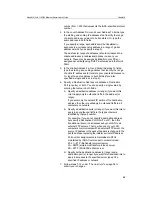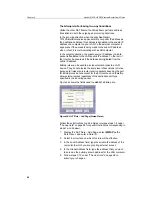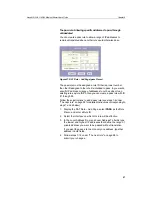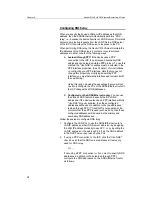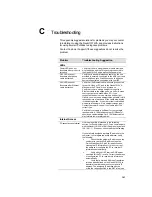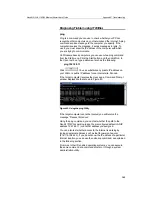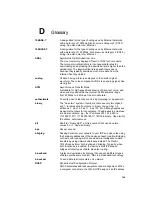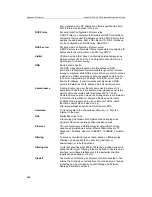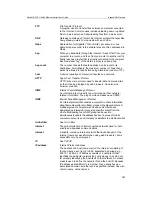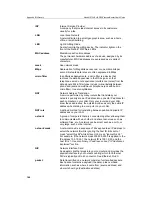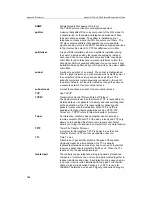
Neobit 1012VA-II ADSL Ethernet Router User’s Guide
Appendix
D
. Glossary
147
FTP
File Transfer Protocol
A program used to transfer files between computers connected
to the Internet. Common uses include uploading new or updated
files to a web server, and downloading files from a web server.
GGP
Gateway to Gateway Protocol. An Internet protocol that specifies
how gateway routers communicate with each other.
Gbps
Abbreviation for Gigabits (“GIG-uh-bits”) per second, or one
billion bits per second. Internet data rates are often expressed in
Gbps.
hop
When you send data through the Internet, it is sent first from your
computer to a router, and then from one router to another until it
finally reaches a router that is directly connected to the recipient.
Each individual “leg” of the data’s journey is called a hop.
hop count
The number of hops that data has taken on its route to its
destination. Alternatively, the maximum number of hops that a
packet is allowed to take before being discarded (
see also TTL
).
host
A device (usually a computer) connected to a network.
HTTP
Hyper-Text
Transfer
Protocol
HTTP is the main protocol used to transfer data from web sites
so that it can be displayed by web browsers.
See also web
browser, web site
.
ICMP
Internet Control Message Protocol
An Internet protocol used to report errors and other network-
related information. The ping command makes use of ICMP.
IGMP
Internet Group Management Protocol
An Internet protocol that enables a computer to share information
about its membership in multicast groups with adjacent routers. A
multicast group of computers is one whose members have
designated as interested in receiving specific content from the
others. Multicasting to an IGMP group can be used to
simultaneously update the address books of a group of mobile
computer users or to send company newsletters to a distribution list.
in-line filter
See micro filter
.
Internet
The global collection of interconnected networks used for both
private and business communications.
intranet
A private, company-internal network that looks like part of the
Internet (users access information using web browsers), but is
accessible only by employees.
IP
See TCP/IP
.
IP address
Internet Protocol address
The address of a host (computer) on the Internet, consisting of
four numbers, each from 0 to 255, separated by periods, e.g.,
209.191.4.240. An IP address consists of a
network ID
that
identifies the particular network the host belongs to, and a
host
ID
uniquely identifying the host itself on that network. A network
mask is used to define the network ID and the host ID. Because
IP addresses are difficult to remember, they usually have an
associated domain name that can be specified instead.
See also
domain name, network mask
.


